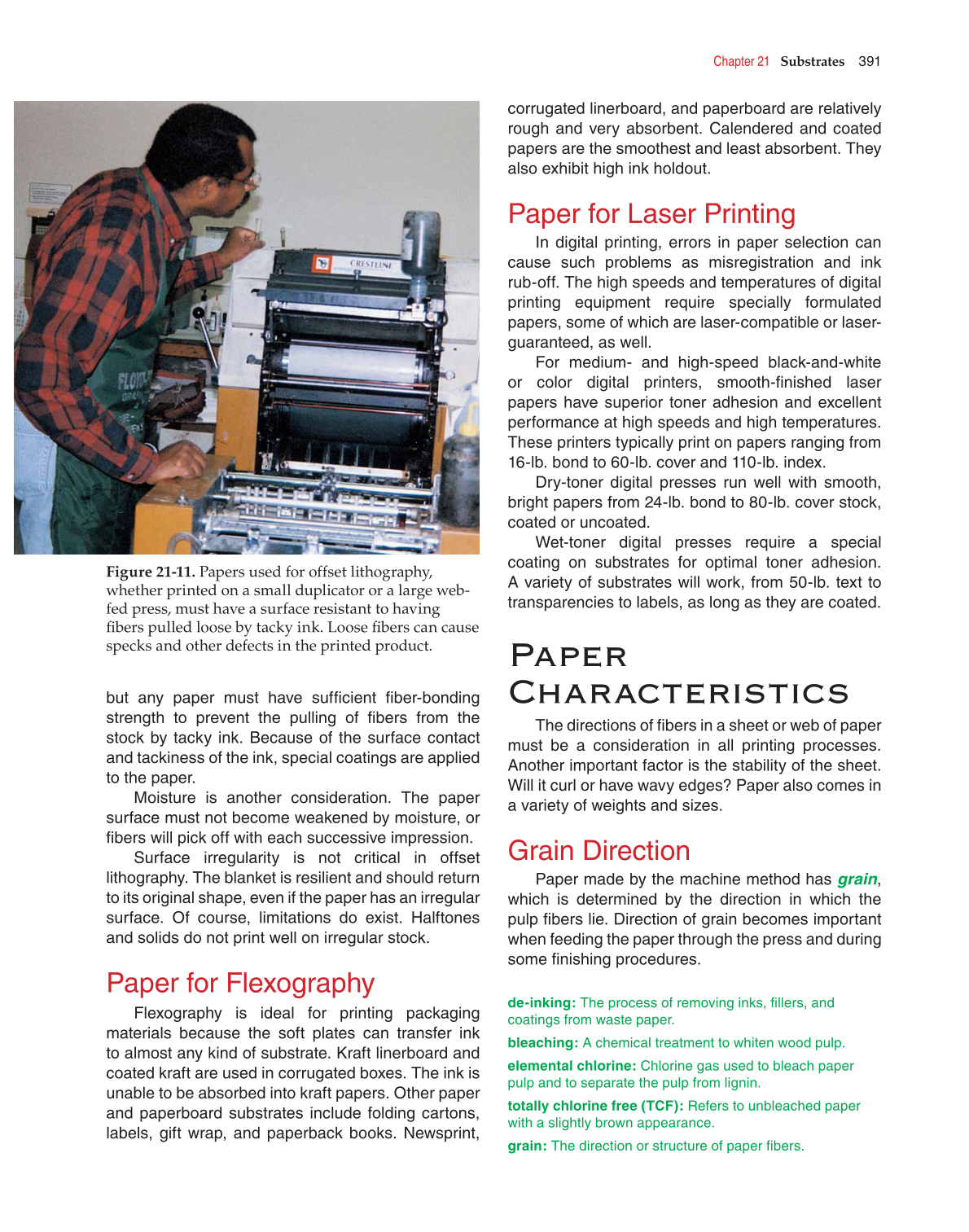Chapter 21 Substrates 391
but any paper must have suffi cient fi ber-bonding
strength to prevent the pulling of fi bers from the
stock by tacky ink. Because of the surface contact
and tackiness of the ink, special coatings are applied
to the paper.
Moisture is another consideration. The paper
surface must not become weakened by moisture, or
fi bers will pick off with each successive impression.
Surface irregularity is not critical in offset
lithography. The blanket is resilient and should return
to its original shape, even if the paper has an irregular
surface. Of course, limitations do exist. Halftones
and solids do not print well on irregular stock.
Paper for Flexography
Flexography is ideal for printing packaging
materials because the soft plates can transfer ink
to almost any kind of substrate. Kraft linerboard and
coated kraft are used in corrugated boxes. The ink is
unable to be absorbed into kraft papers. Other paper
and paperboard substrates include folding cartons,
labels, gift wrap, and paperback books. Newsprint,
corrugated linerboard, and paperboard are relatively
rough and very absorbent. Calendered and coated
papers are the smoothest and least absorbent. They
also exhibit high ink holdout.
Paper for Laser Printing
In digital printing, errors in paper selection can
cause such problems as misregistration and ink
rub-off. The high speeds and temperatures of digital
printing equipment require specially formulated
papers, some of which are laser-compatible or laser-
guaranteed, as well.
For medium- and high-speed black-and-white
or color digital printers, smooth-fi nished laser
papers have superior toner adhesion and excellent
performance at high speeds and high temperatures.
These printers typically print on papers ranging from
16-lb. bond to 60-lb. cover and 110-lb. index.
Dry-toner digital presses run well with smooth,
bright papers from 24-lb. bond to 80-lb. cover stock,
coated or uncoated.
Wet-toner digital presses require a special
coating on substrates for optimal toner adhesion.
A variety of substrates will work, from 50-lb. text to
transparencies to labels, as long as they are coated.
Paper
Characteristics
The directions of fi bers in a sheet or web of paper
must be a consideration in all printing processes.
Another important factor is the stability of the sheet.
Will it curl or have wavy edges? Paper also comes in
a variety of weights and sizes.
Grain Direction
Paper made by the machine method has grain,
which is determined by the direction in which the
pulp fi bers lie. Direction of grain becomes important
when feeding the paper through the press and during
some fi nishing procedures.
Figure 21-11. Papers used for offset lithography,
whether printed on a small duplicator or a large web-
fed press, must have a surface resistant to having
fi bers pulled loose by tacky ink. Loose fi bers can cause
specks and other defects in the printed product.
de-inking: The process of removing inks, fi llers, and
coatings from waste paper.
bleaching: A chemical treatment to whiten wood pulp.
elemental chlorine: Chlorine gas used to bleach paper
pulp and to separate the pulp from lignin.
totally chlorine free (TCF): Refers to unbleached paper
with a slightly brown appearance.
grain: The direction or structure of paper fi bers.
